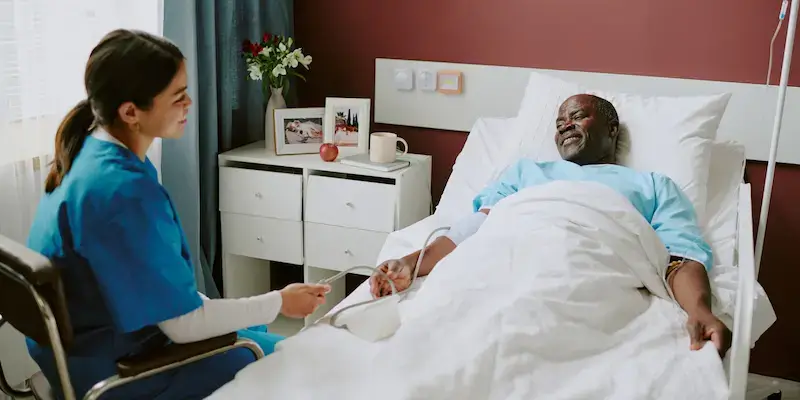Home >
Spinal stenosis
Get rapid access to our leading specialists.
Stenosis is the medical term used to describe a narrowing of a passage in the body. In the case of the spine, this can take place within the central canal or the lateral recesses between the vertebrae, which can place pressure on the spinal cord or nerves.
What is spinal stenosis?
Your vertebrae are bones that connect to form your spine. Inside your spine is the spinal cord extending from the base of the skull down through the lower back. In between the vertebrae there are spaces known as foramena, which allow a pair of segmental nerves to exit the spinal canal at each level, these too may be narrowed leading to lateral recess stenosis. When narrowing reaches a critical point, nerve symptoms may follow as a result of direct compression. Spinal stenosis can occur in any part of the spine, but commonly the lumbar and cervical spine. Usually the onset of symptoms is late, with disease progression very slow, often taking many years to develop.
What are the symptoms of spinal stenosis?
Many people do not have symptoms of spinal stenosis. In fact, they discover they have spinal stenosis after having an MRI or CT scan for an unrelated reason.
If you have symptoms, they often develop over time and you might experience:
- Numbness or tingling in the hand, arm, foot or leg
- Problems walking short distances and/or unsteadiness on your feet
- Neck pain and/or arm pain and weakness
- Back pain and/or leg pain and weakness
- Difficulty or inability to do up buttons or write with a steady hand
- Loss of bladder or bowel control (in severe cases)
What causes spinal stenosis?
Spinal stenosis can be caused in a variety of ways, most often:
- Bone overgrowth/arthritic spurs: Osteoarthritis is the commonest cause of wear and tear that leads to a breakdown in the cartilage that protects the joints. Your body reacts by stimulating bone growth that may form bone spurs. These spurs can extend into the spinal canal narrowing the space and leading to symptoms.
- Herniated/bulging discs – between each vertebra a round cushioning pad known as disc, acts as a shock absorber for the spine. Age related bulges, or disc herniations can lead to narrowing within the central canal or lateral recesses.
- Thickened ligaments – Ligaments are tough fibrous bands connecting the bones of the spine together. These may become thickened as a result of arthritis in the bone leading to narrowing of the central canal.
- Spinal fractures or injuries – broken or dislocated bones often result in significant inflammation when healing. This can lead to narrowing and deformity.
- Congential spinal stenosis – this is a condition in which a person is born with a congenital narrowing making them more susceptible to symptoms later in life.
- Spinal cysts or tumors – abnormal growths in and around the spine can lead to narrowing within the spinal canal and put pressure on the spinal cord or nerves.
How is spinal stenosis diagnosed?
Your doctor will ask about your medical history, including details of your symptoms. They will perform a physical examination while they look for any problems of movement.
To formally diagnosis spinal stenosis, your doctor may also request that you undergo:
- X-ray of the spine – can show areas of narrowing or deformity such as scoliosis or spondylolisthesis.
- MRI– provides detailed images of the bones, discs, soft tissue including the nerves and the presence of any tumours.
- CT – for some circumstances where there is a contraindication for an MRI, a CT scan may be obtained instead. This provides detailed cross sectional images of the bones of the spine and some of the soft tissues.
- Nerve conduction studies – to measure electrical activity in the nerves and muscles
- Blood tests – to determine whether there is an inflammatory cause for the stenosis.
How is spinal stenosis treated?
The treatment for spinal stenosis will depend on individual circumstances.
Non-surgical options include:
- Routine exercises to improve mobility and stability
- Steroid or epidural injections injected in the spinal canal for leg or arm pain
- Anti-inflammatory drugs and anti-neuropathic medication
- Acupuncture and massage
- Heat packs or ice
In severe cases, your doctor may recommend surgery to relieve the pressure on the spinal cord and/or nerve roots and may be done with or without spinal fusion.
If you’re unsure what treatment you should go for, or the above treatments don’t work for you, our team of expert specialists are here to help.
Need further help or advice?
Contact our team for enquiries or information.
If you need to contact us in any other way, please go to
